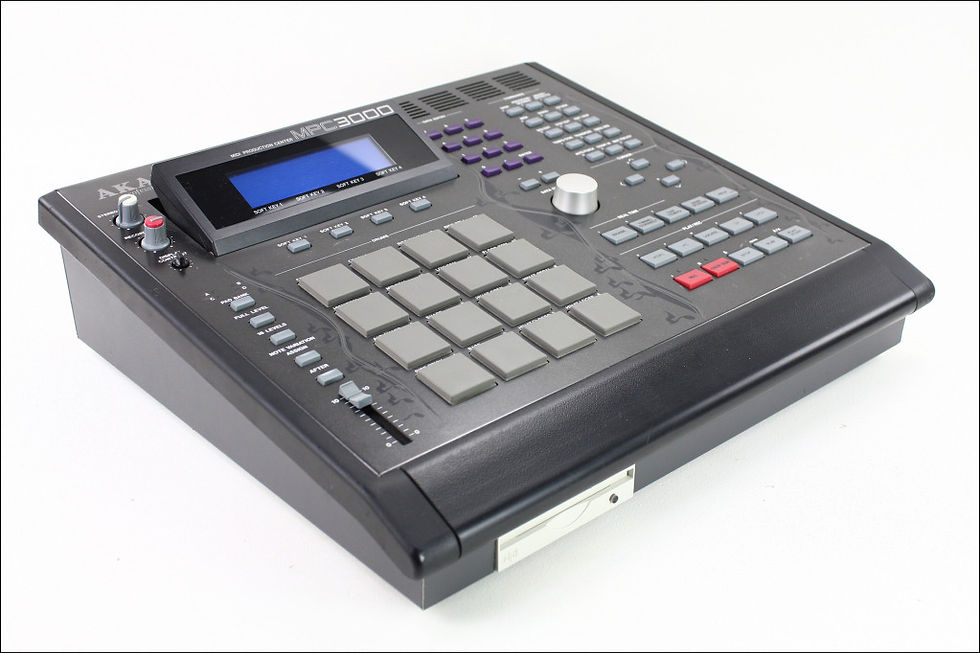- Shams The Producer

- Oct 10
- 4 min read
In my last post, I talked about the gear I’ve used over the years and my transition from analog to digital as a beatmaker and music producer. Today, I want to expand on that topic — exploring how Dancehall and Reggae evolved from analog to digital production, based on what I’ve seen other producers and musicians use over the decades.
From Tape to Tech: A Changing Sound (Reggae Production)
If you’re over 30, you’ve likely noticed how the sound of our music has changed with each decade — from the 1970s to today. Over just a few decades, the sonics of Dancehall and Reggae evolved from gritty, warm analog tones to the crisp, polished sound of modern digital production.
In the 1970s and early ’80s, most sessions were recorded using analog gear — tape machines, mixing consoles, and live instruments like bass, guitar, Hammond B3 organ, and grand piano. Bands played together in the same room, often with the lead vocalist tracking live alongside them. Songs were rehearsed several times before the tape started rolling.
Legends such as Bob Marley, Toots & the Maytals, Jimmy Cliff, and Beres Hammond all recorded in this organic, live-in-studio format. Even classics like “Bam Bam” by Sister Nancy and many of Yellow Man’s hits came out of the analog era.
The Digital Dawn

By the late 1970s and early 1980s, technology began reshaping music production. Electronic drum machines and synthesizers started replacing traditional instruments — mimicking drums, strings, brass, and keyboards. The first commercial drum machine was the Wurlitzer Sideman in 1959, used on “Baby You’re Mine” by Robin McKeller. But these devices were expensive until Casio entered the game.
Casio’s affordable keyboards democratized music creation. The Casio MT-40 (released in 1981) powered the legendary “Sleng Teng” riddim, produced by King Jammy in 1985 — the riddim that officially launched the digital dancehall revolution.
The Innovators: Steely & Clevie (Dancehall History)
Lloyd “King Jammy” James Sr., one of Jamaica’s most influential producers, surrounded himself with innovative musicians — including the powerhouse duo Steely & Clevie.

Clevie (my uncle!) transitioned from live drumming with bands like Generation Gap and Studio One’s house band for Freddie McGregor into the digital realm. Steely, meanwhile, had been a keyboardist for Roots Radics and helped define the era’s new sound.

As his nephew, I was lucky enough to see some of his “tools of trade.” My brother and I even inherited a few. One standout was the Oberheim DMX drum machine — used on countless hit sessions — later replaced by the E-mu SP-1200 and, eventually, the AKAI MPC-2000.
The SP-1200 helped define riddims like “Street Sweeper,” “Skettel,” and “Colombian Necktie” for Steely & Clevie's Studio 2000 Production label.
The Sound of the ’90s
By the early 1990s, the Korg M1 and Yamaha DX-100 became the go-to keyboards for reggae and dancehall producers. Steely often used the Yamaha CS-01 for his signature synth-bass tone, pairing it with the bright keys of the DX-100.
These instruments became staples of the Jamaican studio sound. Whether you were in Kingston or Montego Bay, chances are every studio had a DX-100 or Korg M1 on deck. Later, new gear like the Roland JV-1080, Korg Triton, E-mu Planet Phat, and Mo’ Phatt joined the lineup, continuing the evolution.
The Taxi Gang Legacy
Meanwhile, Sly & Robbie — the Rhythm Twins — were blazing their own digital trail. Sly Dunbar

was among the first drummers in Jamaica to use the AKAI MPC 60. His drum sequences were layered and heavy, with multiple kicks and snares giving them a distinctive punch.

Together with The Taxi Gang, Sly & Robbie produced hits for Chaka Demus & Pliers like “Murder She Wrote” — a rhythm that still shakes dance floors worldwide.
Before the digital shift, Sly & Robbie had already built their reputation as the backbone of Black Uhuru, touring
with Peter Tosh and recording with Grace Jones and Joe Cocker.
From Hardware to “In The Box”
Today, most producers work entirely inside digital audio workstations (DAWs) like Pro Tools, Logic Pro, or Ableton Live. Yet, I wouldn’t be surprised if veterans like Clevie or Sly still incorporate a piece of standalone hardware — perhaps an AKAI MPC variant — in their workflow.
I know I do. After years working solely in-the-box, I recently picked up an MPC One+, and it reignited that old creative spark. There’s just something about tactile hardware that brings the music to life.
The Never-Ending Evolution (Analog vs Digital)
From live bands with 12 musicians to solo producers creating entire songs from a laptop, the music industry has transformed dramatically in less than a century.
Analog consoles with 48 tracks have been replaced by DAWs with unlimited possibilities. Instruments that once filled studios now exist as lightweight plug-ins.
And with tools like AI-driven music generators (hello Suno), we’re stepping into a new phase of innovation.
Whether better or worse depends on your perspective — but one thing is certain: the evolution never stops.
If you found value in this post, feel free to share, comment, or tell me your take on how technology has shaped our music.













